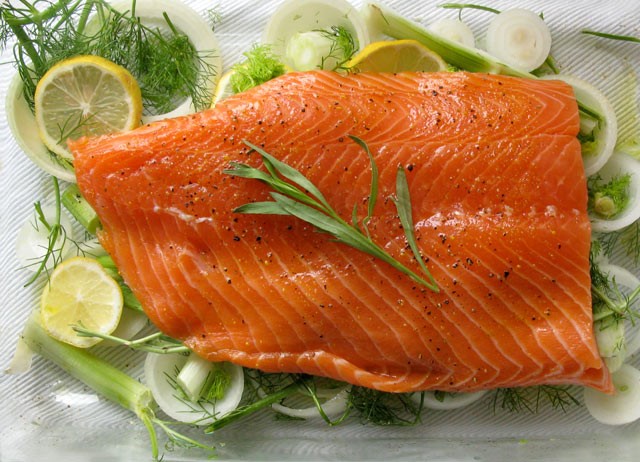Nutrition Articles
Eating Healthy Spotlight on: Cranberries
- Cranberries contain high amounts of vitamin C, fiber, and antioxidants. They also include only 45 calories per cup.
- Cranberry’s juice can be used for the prevention of urinary tract infections and bacterial adhesion in the stomach.
- The same bacteria preventing ability of the cranberry juice can avert the formation of plaque, which leads to fewer cavities.

Recipe: Easy Cranberry Bread
- 2 cups sifted all-purpose flour
- 1 cup sugar
- 1 1/2 teaspoons baking powder
- 3/4 teaspoon salt
- 1/2 teaspoon baking soda
- 1/4 cup butter
- 1 egg, beaten
- 1 teaspoon finely grated orange rind
- 1/2 teaspoon grated lemon, rind of
- 3/4 cup orange juice
- 1 3/4 cups cranberries, chopped
Preheat oven to 350 degrees. Sift flour, sugar, baking powder, salt, and baking soda into a large bowl. Cut in butter until the mixture is crumbly. Add egg, finely grated orange peel, lemon peel, and orange juice all at once; carefully stir until the mixture is evenly moist. Fold in cranberries. Spoon and spread evenly into a greased 9x5x3-inch loaf pan. Bake for 55-65 minutes, or until a toothpick inserted in the center comes out clean. Remove from the pan and cool on a wire rack.
Recipe: Cranberry Sauce
- 1 cup sugar
- 1 cup water
- 4 cups (1 12-oz package) fresh or frozen cranberries
- Optional: Pecans, orange zest, raisins, currants, blueberries, cinnamon, nutmeg, allspice.
Place the cranberries in a colander and rinse them. Pick out and discard any damaged or bruised cranberries. Put the water and sugar in a medium saucepan on high heat and bring to a boil. Stir to dissolve the sugar. Add the cranberries to the pot and return to a boil. Lower the heat and simmer for 10 minutes or until most of the cranberries have burst. Once the cranberries have burst you can leave the cranberry sauce as is or dress it up with other ingredients. We like to mix in a half a cup of chopped pecans with a few strips of orange zest. Some people like adding raisins or currants, or even blueberries for added sweetness. You can also add holiday spices such as cinnamon, nutmeg, or allspice. Remove the pot from heat. Let cool completely at room temperature, then transfer to a bowl to chill in the refrigerator.
Food 101: Choosing a Safe Fish
Whether you celebrate the feast of seven fishes on Christmas Eve, or if you are just looking to eat healthier, many people will be checking out the seafood aisles this season. While choosing the perfect fish can be a little confusing at times, it boils down to choosing a fish with the least amount of mercury. Mercury in fish has been linked to brain and nervous system damage. Here are some ways to keep your mercury levels in check:
- Pass on shark, swordfish, king mackerel, and tilefish as these fish have longer life spans and tend to eat other fish, absorbing the mercury in their prey.
- Eat approximately 12 ounces a week of canned light tuna, Pollock, salmon and catfish because they tend to have a shorter life span and feed on aquatic plants, worms and insects.
- Check out your state’s website to determine how mercury-laden the local fish can be.
Food for Thought Healthy Grab and Go Breakfasts
Because breakfast is the most important meal of the day and because we live in a fast-paced world, we all need to learn some of the best go-to, easy and healthy breakfasts. Here are five grab and go breakfasts.

- Smoothies – Everyone needs their fruits and veggies, so why not drink them? At the base of every smoothie is of course fresh or frozen fruits (and vegetables) but it doesn’t have to stop there. Try adding Greek yogurt for a creamier taste, peanut butter for extra protein or soy or almond milk for some non-dairy smoothness.
- Muffins and quick breads – Now don’t get confused here… store bought muffins are not the healthy options we are talking about. Homemade muffins and quick breads are much better for you because you can determine what ingredients are in your muffins and quick breads.
- Frittatas and Quiches - Another great choice for breakfast when you need a quick go-to option is always quiches and frittatas. These can also be made ahead of time and eaten throughout the week. You can also make mini frittatas by using a muffin pan.
- Yogurt Parfaits – They look nice behind the glass at those fancy coffee shops, and they are super easy to make. All you need to do is combine Greek yogurt, granola and whatever fruit is in season or your favorite. Layer these ingredients as many times as you would like and dig in.
- Breakfast Sandwiches – Take some time over the weekend and prepare some quick, tasty breakfast sandwiches for the week. You can use eggs, vegetables, tofu, or virtually anything that will pack that protein for your first meal of the day. Reheat them as you are ready for them and eat them during your commute or at your desk.
Eating Healthy Spotlight on: Mangoes
- Mangoes are an excellent source of vitamins A and C, and they are also an excellent way to replenish potassium lost through exercise or for those who are constantly “on the go.”
- An average-sized mango can even contain up to 40 percent of your daily fiber requirement, thereby being a great way to curb constipation and irregularity.

Recipe: Jamaican Jerk Chicken Salad
- ½ cup prepared or purchased honey mustard dressing
- 1 teaspoon finely grated lime zest
- 4 chicken breast halves without skin, boneless
- 1 tablespoon Jamaican Jerk seasoning
- 2 large fresh mangoes
- 10 to 12 cups mixed greens
Stir together honey mustard dressing and lime zest. Cover and chill dressing while preparing chicken.
Rinse chicken and pat dry; sprinkle with Jerk seasoning. In a large skillet cook the seasoned chicken in hot oil over medium-high heat about 6 minutes on each side until browned and no longer pink. Thinly slice each chicken breast.
Arrange warm chicken and mango atop greens on four plates. Drizzle with the honey mustard dressing.
Healthy Living Pumpkin Spice Latte Breakdown
One sure sign of fall isn’t the changing and falling leaves or the drop in temperature… it’s the Pumpkin Spice Lattes EVERYWHERE!

While they taste delicious, they can be one of the unhealthiest things you can drink all year. Here are some of the most popular brands that unfortunately aren’t good for your overall health.
- Au Bon Pain Pumpkin Pie Latte – this latte packs 290 calories, 7 grams fat, 115 mg sodium, 49 grams carb, and 47 grams sugar. That’s 12 tablespoons of sugar!
- Krispy Kreme Pumpkin Spice Latte – this seasonal favorite contains 310 calories, 11 grams fat, 120 mg sodium, and 43 grams carbs. The one saving grace of this drink is that these amounts are for the smaller size 12 oz cup.
- McDonald’s McCafe Pumpkin Spice Latte – people are “lovin’ it” but it’s filled with 340 calories, 10 grams fat, 51 grams carbs, and 160 mg sodium. With 160 mg of sodium, that’s twice the amount of salt than a kid’s size French fries.
- Einstein Brothers Pumpkin Latte – this latte contains 370 calories, 10 grams fat, 65 mg sodium, 59 grams carbs, and 54 grams sugar. With 59 grams of carbs, that is twice the amount of a bagel… maybe it’s time to rethink your beverage of choice!
- Starbucks Pumpkin Spice Latte – this is hands down the most popular fall drink of choice (come on, it had its own trending hash tag!) and it is filled with 440 calories, 8 grams fat, 280 mg sodium, and 63 grams carbs. You would be better off eating a pumpkin cream cheese muffin – which contains fewer calories!
- Dunkin Donuts Pumpkin Latte – this latte contains 470 calories, 13 grams fat, 250 mg sodium, and 71 grams sugar. And just because they offer three different flavors of pumpkin latte that doesn’t mean you are in the clear if you order one over another – they are all made up of the same nutritional content. You would be better off eating three of their chocolate caramel donuts!

